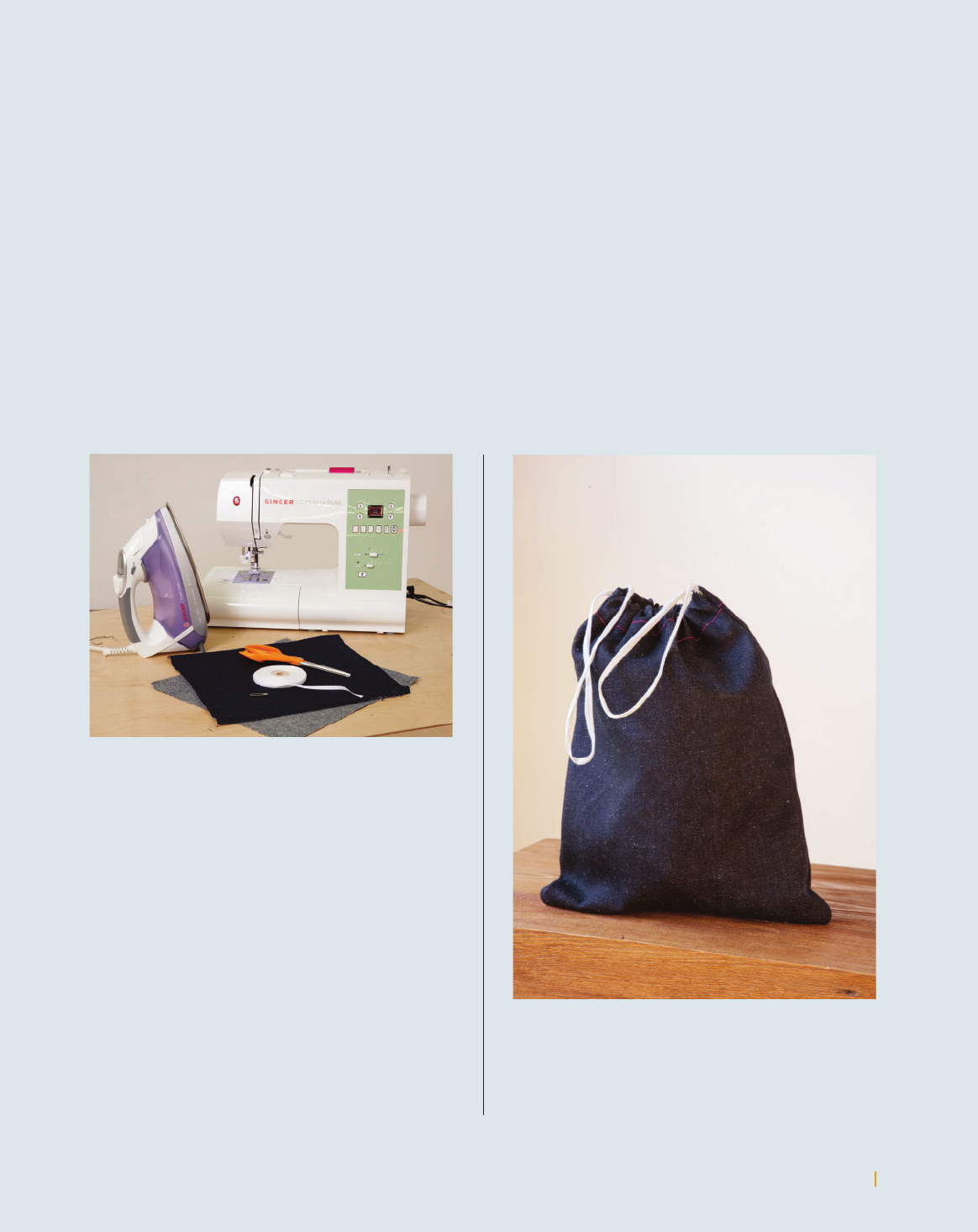
(RAY)
(Fogra 39) Job:02-28051 Title:RP-Textile Artist Handbook
#175 DTP:225 Page:148
138-151_28051.indd 148 3/6/12 8:55 PM
(RAY)
(Fogra 39) Job:02-28051 Title:RP-Textile Artist Handbook
#175 DTP:225 Page:149
138-151_28051.indd 149 3/6/12 8:55 PM
(Text)
THE TEXT ILE ARTI ST' S S T UDIO HANDB OOK
148
SEWING, QUILT ING,A ND APPLIQ UÉ
instructions
1. Smooth out the item on your work surface. Close
all buttons or zippers so you can assess the size of
the hole or tear.
2. Slide the paper under the tear or hole and trace
the hole onto the paper to the approximate size
area you need to cover. Pull out the paper and
draw a heart (or any shape) around the traced
marks. [a, b]
3. Cut the heart shape out of the paper and use it
as a template. Position the paper template over
the tear and trace around it with tailor’s chalk or a
disappearing ink fabric marker. [c]
4. Cut directly on the traced outline, leaving a heart-
shaped hole where the tear used to be. [d]
5. Layer the fabrics, red fabric right side down,
batting, and blue fabric wrong side down and
trim them to desired size to completely cover the
heart-shaped hole with at least 1 inch (2.5 cm)
extra all around. Baste the layers together.
6. Turn the jacket sleeve wrong side out. Center and
pin the fabric layers under the heart-shaped hole.
Baste or pin the layers to the jacket. [e]
7. Turn the jacket right side out and pin the cut edges
of the heart-shaped hole to the wrong side. [F]
8. Handsew around the folded edges, through all
the layers, using red or blue thread. [g] A straight
stitch (page 142) or blanket stitch (page 155) works
best.
A B
C D
E
G
F
(RAY)
(Fogra 39) Job:02-28051 Title:RP-Textile Artist Handbook
#175 DTP:225 Page:148
138-151_28051.indd 148 3/6/12 7:32 PM
(Text)
THE TEXT ILE ARTI ST' S S T UDIO HANDB OOK SEWING, QUILT ING,A ND APPLIQ UÉ
149
PROJECT:
tools
• Sewing machine
• Iron and ironing
board
• Straight pins
• Fabric scissors
• Safety pin
materials
• 2 pieces of fabric
each 10" x 12" (25.4
x 30.5 cm), or any
size of your choice
• 2 yards (1.8 m) of
ribbon, cord, or
string for the draw-
string
Drawstring Bag
Sewing is the basis for many other needle arts. The sewing instructions for a very
simple drawstring bag follow, but consider first making patchwork fabric and using it
to make the bag, or appliquéing unique shapes onto a very plain fabric to incorporate
multiple techniques into one fabulous project. You can even sew French seams!
Practice sewing with very simple projects like this drawstring bag to perfect
basic sewing principles. As you advance your skills, you’ll find that much of sewing is
common sense and an ability to envision how to transform flat fabric into something
three-dimensional.
The drawstring bag pattern can be used
over and over and altered or embellished.
Getting comfortable with simple patterns
like this and then changing them according
to your own desire is a great way to practice
sewing and construction principles.
(RAY)
(Fogra 39) Job:02-28051 Title:RP-Textile Artist Handbook
#175 DTP:225 Page:149
138-151_28051.indd 149 3/6/12 7:32 PM
Get The Textile Artist's Studio Handbook now with the O’Reilly learning platform.
O’Reilly members experience books, live events, courses curated by job role, and more from O’Reilly and nearly 200 top publishers.

